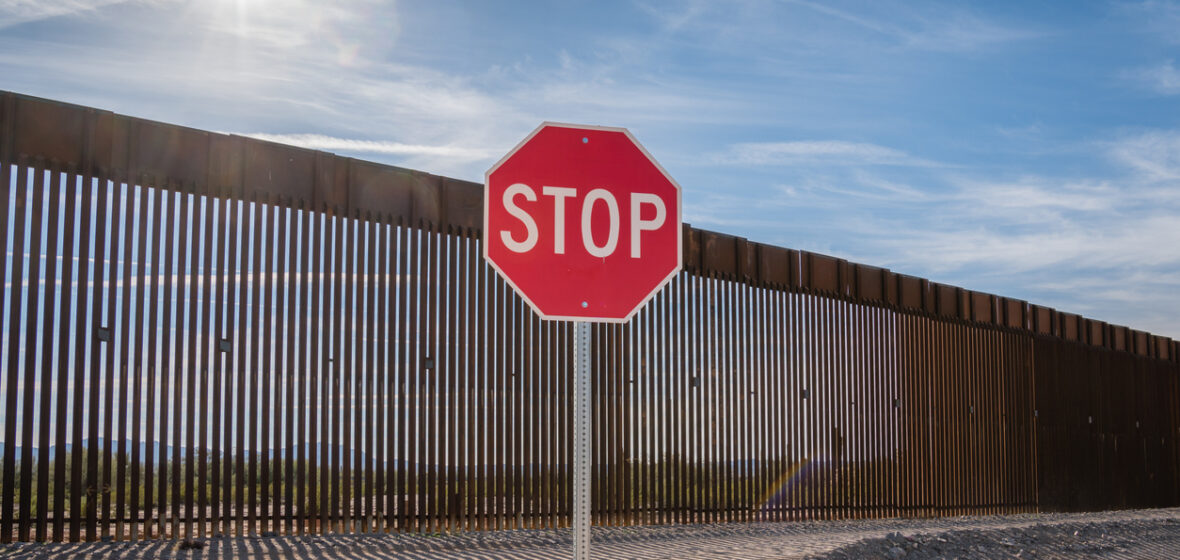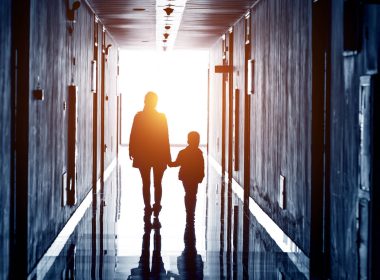The first thing you notice when you walk out of the airport in Arizona is the heat. While much of the country is preparing for winter, the Grand Canyon State retains its searing temperatures. Immediately after the heat comes the politics. On every street corner, on cars, on buildings and on baseball caps, people make their views known.
The signs are consistent for the Democratic ticket: “Harris Walz” in red, white and blue. Republicans are more creative: “Trump low taxes, Kamala high taxes”; “Trump safety, Kamala crime”; “Trump secure border, Harris open border”.
The border is the story.
Ever since Donald Trump walked down the golden escalator, immigration has played centre stage. “When Mexico sends its people, they’re not sending their best…they’re bringing drugs. They’re bringing crime. They’re rapists,” he told us.
Nine years later, the language is different, but the rhetoric is the same: “they’re eating the dogs; they’re eating the cats”.
Nowhere is this issue more immediate than Arizona, whose border with Mexico sees thousands of daily attempted crossings.
Here and indeed across much of the country, immigration is Trump’s strongest terrain: voters who say it is their most important issue favour Trump over Harris by 12 per cent. A fear of ‘illegal aliens flooding into local towns, terrorising communities and stealing jobs’, as well as more measured concerns about the vast numbers of would-be migrants, have led to much of the voting population supporting stricter controls.
In 2022, the Republican Governors Ron DeSantis of Florida and Greg Abbott of Texas loaded asylum seekers from their states into private planes and buses, transporting them to liberal enclaves like Massachusetts and New York City in an attempt to show east coasters the reality that border states face.
The cruel and bold stunt paid off. As New York City homeless shelters filled, attitudes hardened.
In February of this year, enough support among Democrats for harsher immigration laws allowed Joe Biden to propose comprehensive reform that met most of the Republican demands, including more frequent border closures and deportations, increased fencing, and a higher bar for asylum claims. The bill was what Republicans had been asking for, but because it would have handed the Democrats a victory on their weakest issue in an election year, Trump ordered congressional Republicans to withhold their support. The reality today is that the country has not passed significant immigration reform in more than 40 years and immigration remains a vulnerability for the Democrats.
Such bipartisan support for stricter immigration conditions suggests that the country wants to close the borders and confine asylum seekers to Mexico. But that’s not the whole story.
Bridging the divide
Early on a Friday morning, thirty miles from the border in the small Arizona town of Sahuarita, people are arriving at the Good Shepherd Uniting Church. The church is one of the few in the state without an American flag inside or out; rather, a huge pride flag decorates the entry. Pastor Randy Mayer, two congregants and a visiting friend are loading grapes, apples, nuts, fish, sheets and towels into the back of a van. They cram in as many supplies as they can to bring across the border to La Casa, a church-run shelter for asylum seekers.
Before dawn a day earlier, Randy and an army of volunteers had been deep in the Arizonian desert, searching for migrants who had crossed the border under cover of darkness. The people Randy finds are often thirsty and weak, and his team provides them with food and water — sometimes their only sustenance in days. Later that day the Border Force will pick them up. Some may be processed in America; most will be deported. Randy wishes they knew about La Casa.
La Casa’s 116 residents from Mexico, Guatemala, Honduras, Nicaragua, Bolivia and Peru won’t have to cross the border through a hole in the wall in the dead of night. Each of them has registered through the US Government’s CBP One application.
CBP One provides the sole channel for asylum seekers to register for an interview in the US and apply for asylum. The application rollout has been troubled. It requires internet access, it is plagued with glitches, sometimes it fails to recognise photographs of brown and black faces, and it is one size fits all — there is no opportunity to flag urgent cases. La Casa’s residents might be waiting up to a year to be allocated an interview and the right to cross into the US. Still, in the meantime they have a safe place to live.
Over the course of a few hours, we meet many of the residents. There is Gabriella, a young woman fleeing the Mexican cartels, who runs the embroidery workshop. There’s a 15-year-old boy taking charge in the tiny tortilla factory. Mothers sit together in a small room for art therapy; a way to help process the horrors many of them have experienced in their home countries and during the often-hellish journey to seek safety. The teenagers learn English and the children practise their dance for the Day of the Dead celebrations, running up to hug the visitors with big grins.
The compound feels tranquil and rehabilitative. But there are darker notes. The cartel lives and operates directly below the shelter; it is only their respect for Sister Lica, the shelter’s director, that ensures La Casa’s safety. And a missing person’s poster tells the story of a mother and her daughter who fled their home on the roof of a freight train. The mother fell off and eventually made her way to La Casa. Her four-year-old daughter is still missing.
Randy wants people to know these stories.
“It’s safe to say that most people in the United States do not know a migrant, and they don’t know the challenges they they’re going through”, he says. “What we’ve always learned is that once people meet a migrant face-to-face, they become very touched by their story and want to help”.
Randy’s church may be progressive, but many of his neighbours are some of the country’s most inflammatory anti-immigration voters. I met them across several days in Arizona.
On the street, at church and at the very well-attended two-day Tucson gun expo, the “crisis at the border” came up again and again.
“Kamala didn’t even come to the border until this year”, one of them told me. “She doesn’t know what it’s like.”
Have these individuals been to the border? Certainly their image of what goes on along the nearly 2,000-mile dividing line between North and Central America is nothing like what Randy and his congregation experience every week. Just once, Randy would like for them to share in the experience.
Until they do, these hardliners are unlikely to change their views, and they proudly shared with me that they plan to vote for Trump for the third time. Randy is fervently opposed to a second Trump term and it’s clear he’s eager for the Democrats to win up and down the ballot. But on the issue that he cares about the most, he fears that nothing will change.
“The Democrats are just as bad as the Republicans on immigration”, he says. “Their rhetoric is a little bit softer, a little bit more palatable”, but according to Pastor Randy Mayer, all they seem to do is “throw money at border patrol and militarise the border”.
Unlike most of the country’s residents, we did go to the border. Part wall, part fence, part high-tech barrier snaking through communities, the border is a behemoth. Agents sit in their vehicles and patrol the US side, augmented by facial recognition cameras and stadium lights focused in on Mexico. In one spot, a bouquet of flowers marks the site where a border patrol agent shot and killed a young boy sent by the cartel to drop off drugs. Nearby, a tangle of wire remains after a woman who tried to jump the fence fell and was trapped upside down until she suffocated.
And just up the road, we witnessed a rare moment. Five middle-aged women, three on the US side, two in Mexico, talking to each other and touching hands through the fence’s mesh. They were sisters, all born in Mexico. Dora, Lupita, Miriam, Lolis and Rosa. Three had made their way to America a long time ago, one of whom is unable to leave. Two remained in Mexico and can’t get visas to America. Today was the first time they had seen each other in 22 years. The emotions were overwhelming, they told me.
A silver lining for a tense place enveloped by a toxic issue that might just decide the election.
There is a crisis at the border, there’s no doubt about that. Unfortunately for all involved, nobody can agree on exactly what that crisis is, or exactly how to fix it.




